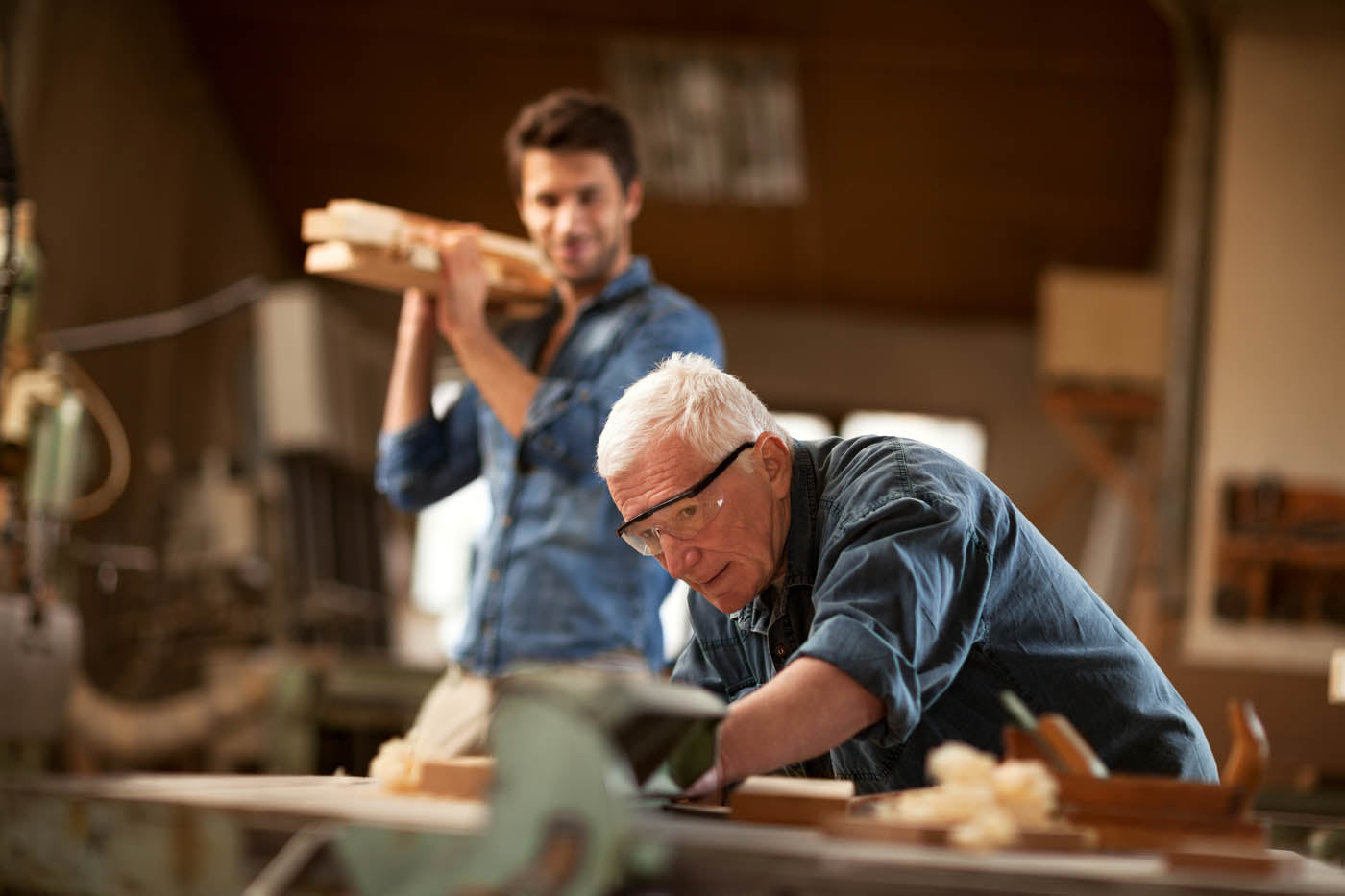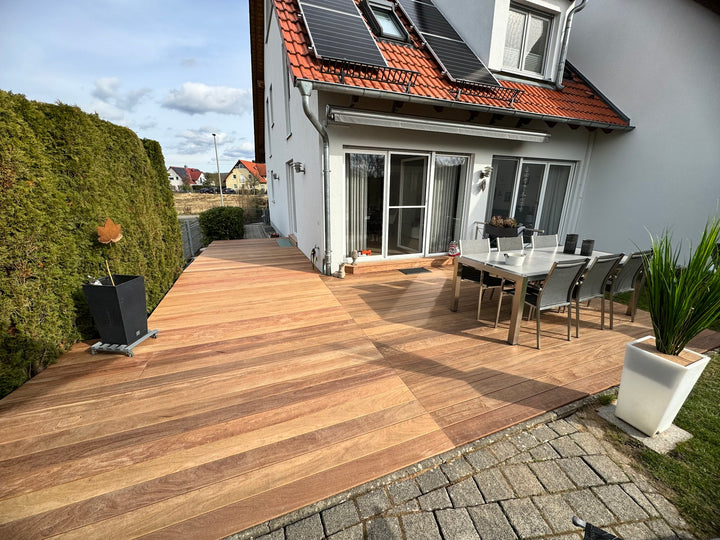Bangkirai (Yellow-Balau) is one of the most popular and well-known woods for outdoor use. The technological properties of Bangkirai are impressive when used outdoors and especially for decking. This type of wood is characterized by its warm reddish-brown color.
The natural area of origin is Southeast Asia, from India via Indochina to Indonesia.
The technological properties of Bangkirai are impressive when used outdoors and especially for decking. The natural durability according to DIN-EN 350-2 was defined in class 2 (up to 3), so that there is only a restriction for use in direct contact with the ground. Bangkirai can be used long-term without special protective measures.
Bangkirai has a density of 650kg to 1,160kg, on average 940kg, per cubic metre of wood at a wood moisture content of 12% to 15%, which means that an average standard plank with a cross-section of 25x145mm has an average weight of approx. 3.4kg per linear metre.
The Brinell hardness is given as 26 to 38 N/mm 2 and is therefore in the range of the native white oak.
The term KD describes the drying method used to dry the wood from its fresh state to 16-18%. In this case, it is a technical drying process in a drying chamber under controlled conditions. (AD corresponds to air drying).
swelling and shrinking
Bangkirai woods have a medium to high swelling and shrinking behavior and the speed at which moisture is absorbed and released is low. The dimensional changes caused by swelling and shrinking must be taken into account when laying the boards as terrace boards. A gap of 4mm must not be less than this when laying the boards (with a wood moisture content of 16-18%).
workability
Carbide-tipped tools are required to work the wood. Bangkirai is generally easy to work with, but the twisted grain can affect the quality of the cut surface (rough surface).
Holes for the fastenings must always be made to prevent the fastening screws from being unscrewed and also to avoid possible cracks in the wood.
ingredients
Like most types of wood, Bangkirai also contains a large number of different ingredients. Some are water-soluble and can be washed out by rain or surface water. This leads to contamination of adjacent components and should be removed immediately. Tannins can also lead to grey-blue discolouration of the wood in combination with ferrous metals. Therefore, the fasteners (screws) must be made of stainless steel (at least A2). But other sources of contamination (e.g. metalwork) must also be avoided, as even small particles can lead to an iron-tannin reaction.
Our expert advice is there for you – by phone or live chat directly on our website:
📞 +49 9543 448 - 0
💬 Live chat: Simply click on the chat icon in the bottom right corner











